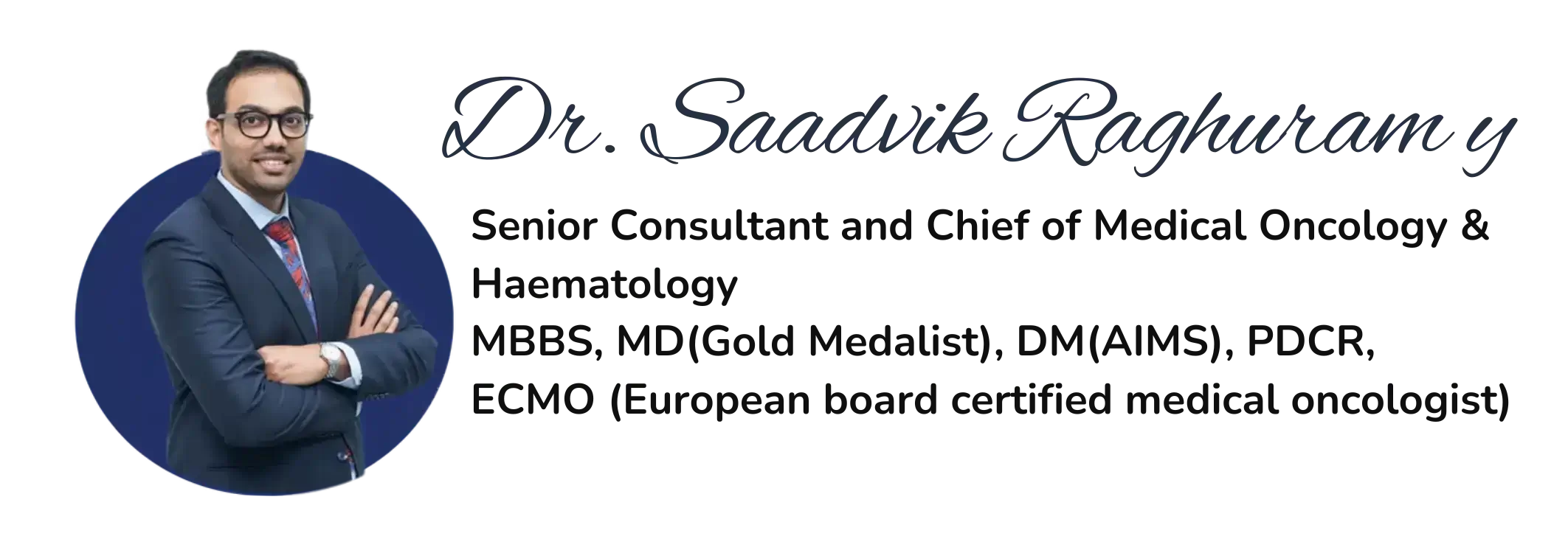Chronic Stress and Cancer: Does Being Constantly Stressed Increase Your Cancer Risk?
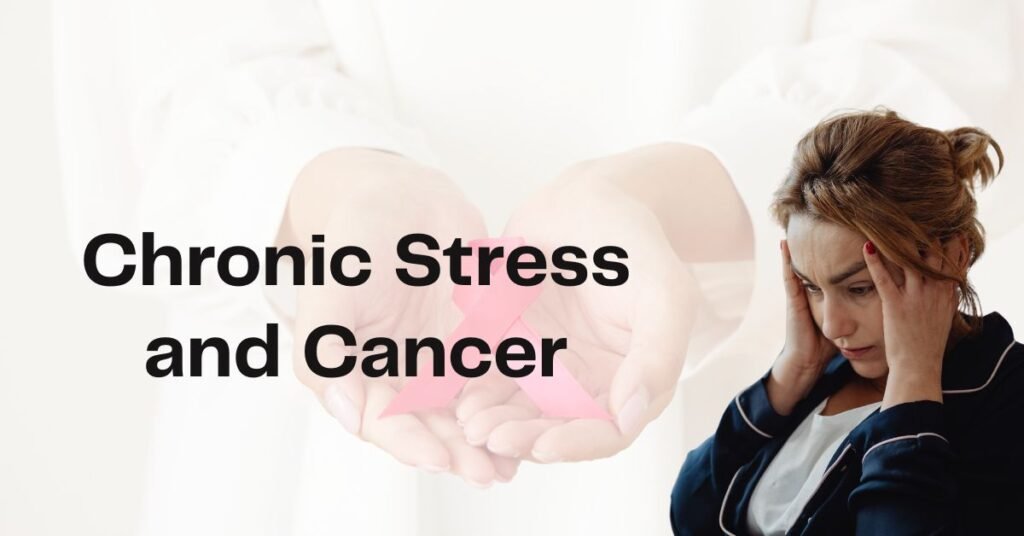
In today’s fast-paced world, stress has almost become a way of life. While short bursts of stress can motivate us to perform better, constant or chronic stress can take a serious toll on our body and mind. But here’s a common question — does being constantly stressed actually increase your risk of cancer? Let’s separate the fear from the facts, as explained by Dr. Saadvik Raghuram, HOD – Medical Oncology, who sheds light on what science really says about the link between stress and cancer biology. The Science Behind Stress and Cancer In animal and laboratory studies, researchers have found that stress hormones — particularly cortisol and adrenaline — can promote cancer cell growth and spread. These hormones influence several biological processes, including: These findings suggest that stress, through hormonal and immune pathways, can play a role in cancer development — at least in theory and in controlled experiments. What Do Human Studies Show? When these findings were tested in human clinical trials, the results were mixed.Some studies found that individuals experiencing chronic psychological stress were at a slightly higher risk of certain cancers, such as breast or colorectal cancer. However, other large-scale studies did not find a direct link between stress levels and the occurrence of cancer. This suggests that while stress may influence the progression or outcomes of cancer, it may not directly cause it. The Mind–Body Connection: Why It Still Matters Even if stress doesn’t directly cause cancer, its indirect effects on health are undeniable.Chronic stress can lead to: All of these are well-established risk factors for cancer and other chronic diseases. Managing stress, therefore, plays a crucial role in maintaining overall health and potentially reducing cancer risk indirectly. How to Manage Stress for Better Health If you often find yourself overwhelmed, here are some effective ways to keep stress in check: Conclusion While science continues to study the complex link between chronic stress and cancer, one thing is clear — managing stress is vital for a healthier life.Stress may not directly cause cancer, but its impact on hormones, immunity, and inflammation makes it a factor worth addressing. As Dr. Saadvik Raghuram reminds us, “Stress is inevitable, but how we manage it defines our health journey.” So before you say “I’m just stressed!” again — take a pause, breathe deeply, and remember: a calm mind supports a stronger body.
October: Breast Cancer Awareness Month — Empowering Hyderabad with Knowledge and Action

By Dr. Saadvik Raghuram, Consultant Medical Oncologist, Hyderabad A Global Movement for Women’s Health October marks Breast Cancer Awareness Month, a worldwide initiative dedicated to empowering women through knowledge, early detection, and collective action against breast cancer. As the most common cancer affecting women, breast cancer’s impact is deeply felt across India—particularly in fast-growing cities like Hyderabad, where lifestyle shifts and cultural barriers can delay diagnosis. In this guide, Dr. Saadvik Raghuram, one of Hyderabad’s leading medical oncologists, shares expert insights to help you and your loved ones make informed, life-saving decisions. Breast Cancer Awareness Month: The Urgency in Hyderabad Globally, over 2.3 million women are diagnosed with breast cancer every year. Yet, outcomes differ sharply between countries—largely due to the timing of diagnosis. In India, many women still present with advanced-stage disease, resulting in lower survival rates compared to the global average. Hyderabad’s urban diversity and cultural dynamics create unique challenges—making local education and awareness essential. Awareness is not just symbolic—it’s the first step toward saving lives. Understanding Breast Cancer: Symptoms and Risks Breast cancer develops when abnormal cells grow uncontrollably in the breast tissue, forming a lump or mass.The two primary types are: Key Warning Signs ⚠️ Myth Buster: Early breast cancer is often painless. Don’t wait for pain—get screened regularly. Why Early Detection Saves Lives Early detection remains the cornerstone of breast cancer treatment.When discovered early—often before symptoms appear—survival rates exceed 90%. Recommended Screening Practices Dr. Saadvik Raghuram urges Hyderabad’s women to overcome hesitation and prioritize screenings—as fear and misinformation remain major barriers.Unique Challenges Faced by Women in Hyderabad Despite medical advances, several social and practical challenges hinder early detection: Breaking these barriers requires community-driven initiatives—including multilingual education, survivor advocacy, and public health campaigns that reach every woman. Advances in Breast Cancer Care: A Doctor’s Perspective Dr. Saadvik Raghuram highlights recent innovations that are transforming breast cancer care: These breakthroughs are turning breast cancer from a life-threatening disease into a treatable condition with lasting hope. Real Stories, Real Inspiration The theme for Breast Cancer Awareness Month 2025—“Every Story, Every Journey Matters”—celebrates survivor voices. Across Hyderabad, courageous women share how timely screenings and expert care helped them reclaim their lives. Their journeys stand as powerful reminders that early detection means survival. Community Action and Screening Drives in Hyderabad Throughout October, awareness events, seminars, and free screenings are held across Hyderabad. Local hospitals and clinics offer: Take charge this October—book your screening, attend an event, and share information with those around you. Take the Lead: Schedule Your Breast Screening Today If your breast exam or mammogram is overdue, now is the time. Hyderabad offers accessible options across hospitals and clinics. How to Get Started Early screening isn’t just a test—it’s an act of self-love and responsibility. Conclusion: Toward a Future Without Fear Breast Cancer Awareness Month is more than an annual campaign—it’s a collective mission to ensure that no woman suffers in silence or discovers her cancer too late. Together, through awareness, early detection, and compassionate care, we can build a future where breast cancer no longer takes lives—it only inspires strength. Dr. Saadvik Raghuram reminds every woman:“Your health is your strength. Protect it by making informed choices. Act today—because early awareness and timely action save lives.”
Junk Food and Cancer Risk: Is There Really a Connection?
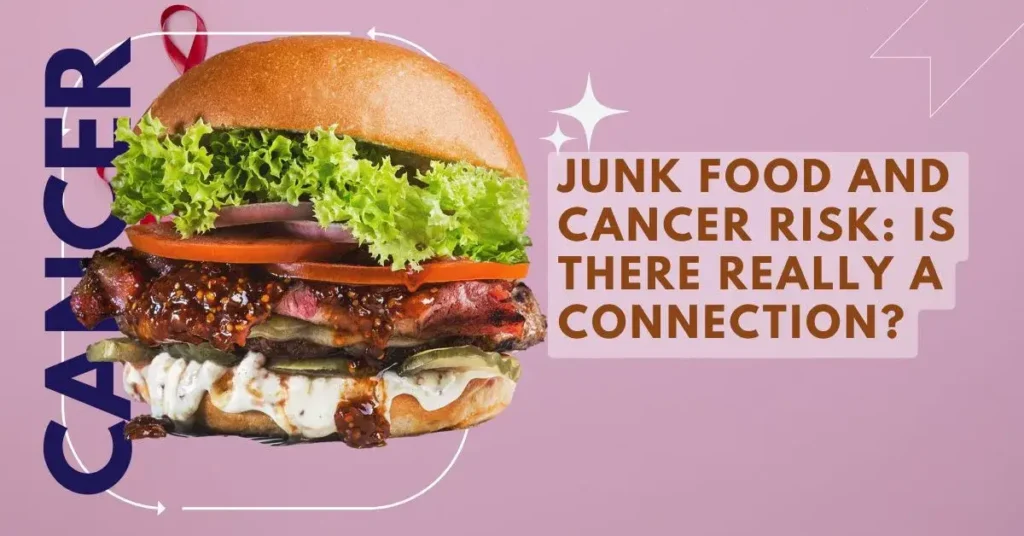
By Dr. Saadvik Raghuram | Medical Oncologist, Hyderabad When we think of cancer risk factors, smoking and alcohol often come to mind. But in today’s fast-paced world, another silent culprit is increasingly under scrutiny: junk food. Burgers, pizzas, fried snacks, sugary drinks, and ultra-processed packaged foods have become a staple in many diets — but can these really increase the risk of cancer? Let’s explore what research says about junk food and cancer risk and why understanding this link matters to protect your health. What Exactly is “Junk Food?” “Junk food” generally refers to ultra-processed foods (UPFs) as classified by the NOVA system. These are foods that are: Common examples include packaged chips, fried fast foods, instant noodles, sweetened beverages, and processed meats. These are at the core of the growing concern around junk food and cancer risk. Scientific Insights on Junk Food and Cancer Risk Large-Scale Studies on Junk Food and Cancer Risk Practical Tips to Reduce Junk Food and Cancer Risk You don’t need to eliminate your favorite snacks completely, but moderation and informed choices are key: Expert Note from Dr. Saadvik Raghuram “Cancer prevention isn’t about a single food but the overall pattern of your diet and lifestyle. Excessive junk food consumption increases obesity and deprives your body of essential nutrients and protective compounds that combat cancer risk. Small, consistent dietary changes can have a significant long-term impact.”If You Have any Doubts about this just Contact Us Final Word While occasional indulgence in junk food may seem harmless, regular habitual consumption elevates junk food and cancer risk through obesity, inflammation, carcinogens, and nutrient deficiencies. Building a balanced diet centered on whole foods remains one of the most effective strategies to protect yourself from cancer.
Childhood Cancer Awareness Month: Early Signs, Treatments, and Hope — A Hyderabad Parent’s Guide (2025)

By Dr. Saadvik Raghuram, HOD Medical Oncology, Hyderabad Why Childhood Cancer Awareness Month Matters Childhood cancers are not rare for the families they affect—and timely referral to a specialist team changes outcomes. Globally, the WHO Global Initiative for Childhood Cancer aims to raise survival to at least 60% by 2030, potentially saving 1 million children over a decade. In India, cancers in children (0–14 years) account for ~4% of all cancers, with lymphoid leukemia the most common childhood malignancy reported by national registries. The Most Common Childhood Cancers While cancer types in children differ from adults, three groups dominate the 0–14 age range: These patterns are consistent across global and Indian data. Early Warning Signs Parents Shouldn’t Ignore Children can’t always articulate symptoms, and early signs may mimic infections. Use the SILUAN checklist, developed to prompt early evaluation and referral: What to do: If these signs persist beyond 1–2 weeks, do not self-medicate. Request a prompt referral to our oncology team. How Childhood Cancers Are Diagnosed Modern Treatment: More Curative, More Precise Most children receive multimodality care: Treatment plans follow evidence-based pediatric pathways (PDQ) and are adapted to each child’s biology and risk. The Good News: Survival Is Rising—But Survivorship Needs Care Thanks to protocol-driven therapy and supportive care, ~85% of children in high-resource settings live ≥5 years after diagnosis. Yet many survivors face late effects—from cardiac or endocrine issues to fertility concerns and learning challenges—requiring long-term, structured follow-up. Survivorship best practice: Create a written care plan aligned to Children’s Oncology Group (COG) Survivorship Guidelines and update it through adolescence and adulthood. Practical FAQs for Families in Hyderabad 1) Can routine vaccines continue during chemotherapy? Some inactivated vaccines may be given on schedule; live vaccines are typically postponed until immune recovery. Always individualize with your oncology team. (For general principles, oncologists follow national and CDC-aligned immunization precautions.) 2) Does diet “treat” cancer? No diet cures cancer. However, medically guided nutrition improves tolerance to therapy, growth, and immunity. Work with your oncology dietitian. 3) Are all fevers emergencies? For a child on chemotherapy, fever is an emergency. Seek care immediately—suspected febrile neutropenia needs urgent antibiotics. 4) When is a second opinion helpful? For rare tumors, relapsed disease, or when advanced radiation (e.g., proton therapy) might reduce long-term side-effects, a second opinion and multidisciplinary tumor board review are valuable. India & Global Context: Why Early Referral Saves Lives How We Care: Dr. Saadvik’s Oncology Philosophy If your child has persistent warning signs, book an urgent oncology assessment. Early action saves lives. A 10-Point Parent Checklist References If you’re in Hyderabad and worried about persistent symptoms in your child, contact Dr. Saadvik Raghuram for a same-week oncology review, evidence-based treatment planning, and a comprehensive survivorship roadmap. Disclaimer: This article is for education and should not replace medical advice. For emergencies (fever during chemotherapy, uncontrolled bleeding, breathing difficulty), seek immediate hospital care.
How Late Night Scrolling Can Increase Cancer Risk: Insights from Dr. Saadvik Raghuram, HOD Medical Oncology, Arête Hospital

In today’s digital age, staying up late with a phone in hand has almost become a nightly ritual. However, what may seem like harmless late-night scrolling could, in fact, be silently harming your health. As the Head of Medical Oncology at Arête Hospital, I, Dr. Saadvik Raghuram, frequently counsel patients on the profound impact of lifestyle habits on cancer risk. One of the most overlooked factors is disruption of circadian rhythm caused by poor sleep hygiene and excessive screen use at night. The Science of Melatonin and Circadian Rhythm The human body follows a natural circadian rhythm, an internal 24-hour clock that regulates essential biological processes including sleep, metabolism, and hormone secretion. Central to this rhythm is melatonin, a hormone secreted by the pineal gland during darkness, which signals the body that it is time to rest. When you scroll your phone late at night, the blue light emitted by screens suppresses melatonin secretion. A study published in the Journal of Clinical Endocrinology & Metabolism (2011) found that exposure to blue light as short as 2 hours at night significantly reduced melatonin production. This chronic suppression of melatonin does more than just cause poor sleep—it disrupts the circadian rhythm, which is increasingly being linked to cancer risk. Circadian Disruption and Cancer: What Research Shows Multiple studies over the last two decades have highlighted the association between circadian rhythm disruption and cancer development: Why Hyderabad Patients Should Be Concerned Hyderabad is a thriving IT hub, with thousands of professionals working irregular hours, late-night shifts, or spending excessive screen time even after work. As a practicing oncologist in Hyderabad, I see many young patients who are unaware that their lifestyle could be silently elevating their cancer risk. In a city where access to sunlight during workdays is limited and screen exposure is high, melatonin suppression is a growing concern. Pair this with sedentary lifestyles, stress, and irregular eating patterns, and the risk amplifies. Practical Steps to Protect Your Health While we cannot eliminate technology from our lives, we can adopt simple, evidence-based steps to safeguard circadian health: Conclusion Late-night scrolling may feel harmless, but over time it can disrupt melatonin levels, disturb circadian rhythm, and increase cancer risk. As the Best Oncologist in Hyderabad and Best Cancer Doctor in Hyderabad, my goal is to raise awareness about how everyday habits can influence long-term cancer outcomes. Your health is not only about advanced treatments—it is equally about prevention through mindful living. By protecting your body’s natural clock, you are also protecting yourself from potential cancer risks. About the Author Dr. Saadvik Raghuram is the Head of Medical Oncology at Arête Hospital, Hyderabad. Recognized as one of the Best Cancer Doctors in Hyderabad, he specializes in evidence-based cancer care with a focus on prevention, early detection, and advanced treatment options.
Low Vitamin D and Cancer: What Patients in Hyderabad Should Know !

(By Dr. Saadvik Raghuram, HOD – Medical Oncology, Arête Hospital | often consulted as the best oncologist in Hyderabad and a trusted best cancer doctor in Hyderabad) Quick Summary (for patients) What is Vitamin D and Why Does it Matter in Oncology? Vitamin D (D₂/D₃) is a hormone-like nutrient essential for bone health, immune modulation, and cellular growth control. Both D₂ and D₃ raise blood 25-hydroxyvitamin D [25(OH)D], with D₃ generally raising it more. From a cancer perspective, laboratory studies suggest vitamin D signaling can influence cell proliferation, differentiation, apoptosis, and immune responses—all relevant to tumor biology. However, real-world clinical outcomes must come from randomized trials, not only lab or observational data. Does Low Vitamin D Increase Cancer Risk? Observational Evidence Many observational studies link lower 25(OH)D levels with higher risks of certain cancers (e.g., colorectal). But such studies can be confounded by lifestyle, sun exposure, diet, and illness. That’s why oncologists rely on randomized trials to guide patient care. Randomized Clinical Trials & Meta-Analyses (What We Trust Most) Bottom line: Low vitamin D correlates with worse outcomes, but supplementing everyone to prevent cancer isn’t supported by strong trial evidence. How Common is Vitamin D Deficiency in India? Systematic reviews across South Asia (including India) show deficiency rates often exceed 50%, especially among women. Causes include indoor lifestyles, sun avoidance, skin pigmentation, air pollution, and diet. India’s 2024 Dietary Guidelines for Indians (ICMR-NIN) emphasize adequate sunlight exposure as part of national guidance. Should You Get Tested for Vitamin D? General Population The USPSTF finds insufficient evidence to recommend routine screening for asymptomatic adults. Who Should Consider Testing? What Levels Are “Low,” “Enough,” and “Too Much”? Tolerable upper intake level (UL): 4,000 IU/day for adults and children ≥9 years, without supervision. What Do the Latest Guidelines Say? The Endocrine Society’s 2024 guideline recommends: Practical Advice for Patients in Hyderabad For Patients Already Diagnosed with Cancer FAQs Is Vitamin D a “Cancer Shield”? No. RCTs show no reduction in overall cancer incidence with supplementation. What Dose Should I Take? Only as advised by your clinician. Do not exceed 4,000 IU/day unless supervised. Should Every Hyderabadi Test Vitamin D Levels? Not necessarily—only if you have risk factors or symptoms. Can I Rely on Sun Exposure Alone? Often not—urban lifestyles, air pollution, skin type, and clothing reduce UV-B absorption. Diet and supplements may be necessary. Professional Note from Dr. Saadvik Raghuram Y As a medical oncologist in Hyderabad, my approach is evidence-first: (If you’re searching for the best oncologist in Hyderabad or the best cancer doctor in Hyderabad, Dr. Saadvik Raghuram provides personalized, research-driven care.)
How Weight Gain Raises Uterine Cancer Risk – Early Signs You Shouldn’t Miss
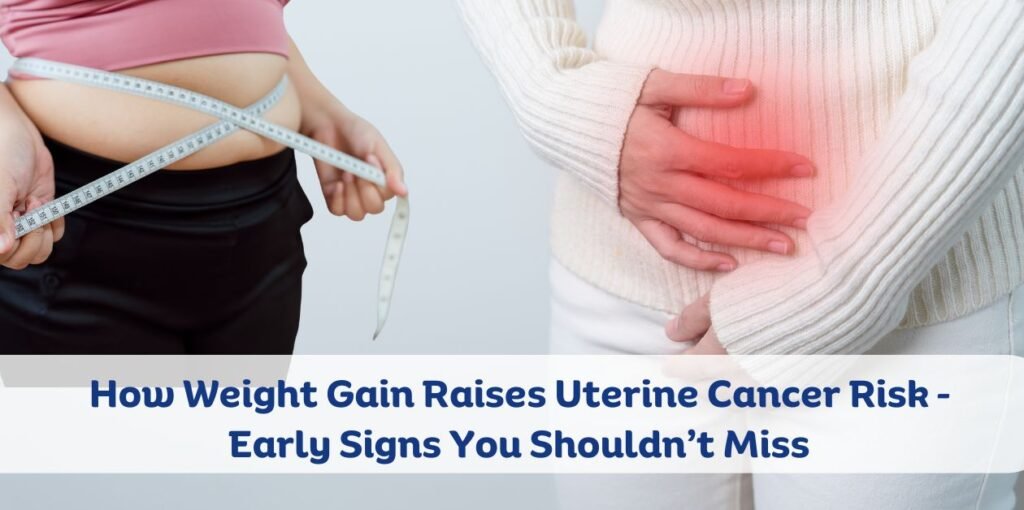
Uterine cancer risk is rising with obesity, yet awareness remains low. Hormonal imbalance from excess weight can trigger cancer. Early detection, weight management, and regular check-ups are key to prevention Uterine cancer, among the most common cancers in women, often builds up with little warning. Behind many of these cases is a growing risk factor—literally and statistically: obesity. While this link is well understood in clinical settings, public awareness still lags far behind. With obesity rates increasing steadily—especially in women in their 30s and 40s—the danger is no longer abstract. It’s current. It’s widespread. And for many, it remains unspoken until a diagnosis arrives. How Weight Disrupts Hormonal Balance Carrying excess body fat affects more than joints or metabolism—it alters hormones. Fat tissue produces estrogen, and in women who aren’t ovulating regularly (a common occurrence in obesity), estrogen levels remain unchecked. Without enough progesterone to counterbalance it, the uterine lining thickens in an unhealthy way. Over time, this hormonal imbalance can lead to cellular changes that raise cancer risk. Among the clearest examples is endometrial cancer, which has shown strong associations with obesity. Research shows that women with obesity may face up to three times the risk compared to those with lower body weight. It Doesn’t Always Begin with Symptoms – (Weight Gain Raises Uterine Cancer Risk) Early signs aren’t always obvious. Irregular bleeding, spotting between cycles, or bleeding after menopause can be early warnings—but they’re easy to miss or dismiss. For younger women especially, these symptoms may not feel serious. Carrying excess weight can blur early warning signs and may also change how the body reacts when illness begins. Many women also miss regular check-ups, especially when they feel healthy. But gynaecological screenings are often the only way to catch early changes. These appointments matter—even when nothing seems wrong. Delayed detection often means more aggressive treatment is needed later on. Where Awareness Can Save Lives Weight management isn’t about appearance. It’s about reducing real, measurable risk. Staying alert to unusual changes in menstrual health, keeping regular check-ups, and being open with doctors about concerns all contribute to early diagnosis. Even small weight loss can have a protective effect—restoring hormonal balance and improving overall reproductive health. Lifestyle changes, made consistently, can make a difference in prevention. What Needs to Change Uterine cancer can be treated effectively when caught early. But the first step is knowing the risks—and not dismissing them. Understanding how weight affects hormone health isn’t about judgment. It’s about giving women the information they need to protect their bodies before symptoms ever appear. If you have any doubt contact us
Bone Cancer Awareness Month: The Latest Research, Early Detection & Expert Care in Hyderabad
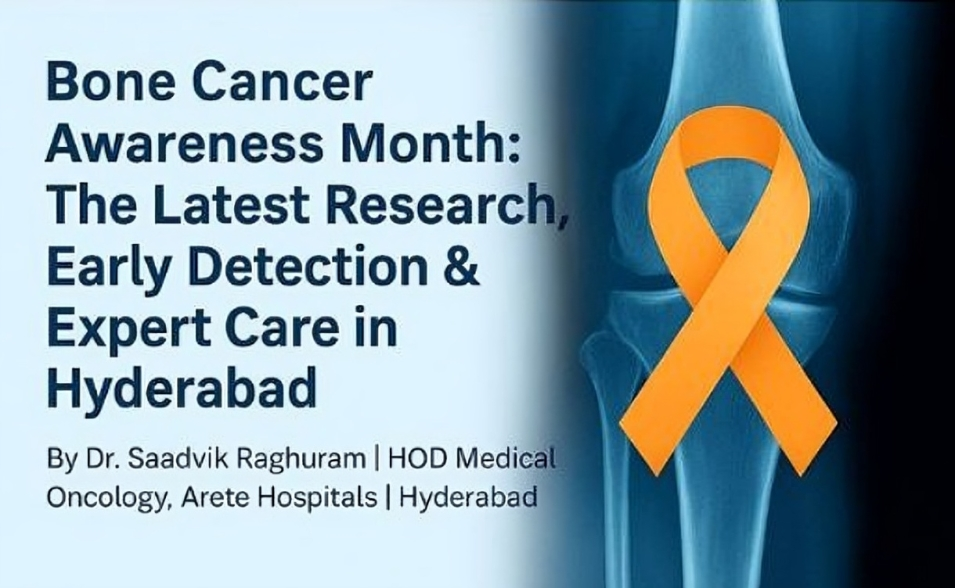
Bone Cancer Awareness Month: The Latest Research, Early Detection & Expert Care in Hyderabad By Dr. Saadvik Raghuram | HOD Medical Oncology, Arête Hospitals | Hyderabad Every July, the global oncology community observes Bone Cancer Awareness Month, a time to focus on a group of rare but serious malignancies that often go undetected until advanced stages. As a practicing medical oncologist in Hyderabad, I believe it’s imperative to highlight the latest clinical insights, early detection strategies, and advancements in bone cancer treatment that can potentially save lives. What is Bone Cancer? Bone cancer refers to malignant tumors that originate in bone tissue, distinct from cancers that spread (metastasize) to the bone from elsewhere. While rare, primary bone cancers can be aggressive and require specialized, multidisciplinary care. Primary Bone Cancers Include:• Osteosarcoma – The most common type, particularly in adolescents and young adults.• Chondrosarcoma – Arises from cartilage-producing cells; more common in adults over 40.• Ewing Sarcoma – Affects children and young adults, often presenting in the pelvis, femur, or ribs. According to GLOBOCAN 2023, bone sarcomas account for less than 0.2% of all new cancer cases globally, yet their burden is disproportionately high in terms of morbidity due to late diagnosis and aggressive progression. Recent Research and Advances in Bone Cancer (2022–2024) A 2022 meta-analysis published in Cancer Discovery found that next-generation sequencing (NGS) in sarcomas revealed targetable mutations in 34% of cases. This opens the door to personalized therapy for bone tumors.• For instance, IDH1/2 mutations in chondrosarcoma are being explored as targets for investigational agents.• TP53 and RB1 mutations in osteosarcoma are being studied to predict prognosis and chemotherapy resistance. Source: Barretina et al., Cancer Discovery, 2022; “Genomic Landscape of Sarcomas” Though traditional sarcomas have been considered immunologically “cold”, research is evolving. A Phase II trial by MD Anderson (2023) demonstrated partial responses in patients with advanced bone sarcoma treated with nivolumab plus ipilimumab, showing a disease control rate of 28%. Reference: Tawbi et al., Lancet Oncology, 2023 A 2022 clinical review in The Lancet Oncology reported that proton therapy reduced radiation-induced toxicities by up to 60% compared to conventional photon therapy in pediatric Ewing sarcoma patients, without compromising tumor control. Reference: Merchant TE et al., Lancet Oncology, 2022 Early Detection: A Clinical Priority in India Early diagnosis remains the most critical factor in improving survival outcomes. However, in India, patients with primary bone tumors often present 6–8 months late, largely due to lack of awareness and misdiagnosis. A multicenter Indian study (AIIMS + TMH, 2023) showed that nearly 40% of primary bone sarcomas were initially misdiagnosed as infections or trauma-related injuries. Red Flag Symptoms to Watch:• Persistent bone pain, especially at night or during activity• Swelling or palpable mass near a joint or long bone• Spontaneous fractures• Unexplained fatigue, weight loss• Pain not relieved by rest or common analgesics Why Choose Dr. Saadvik Raghuram for Bone Cancer Care in Hyderabad? I specialize in solid tumor oncology, including sarcomas and rare cancers. My focus is on: Evidence-based protocolsTumor board-based collaborative decisionsPersonalized patient education and support Being recognized among the best oncologists in Hyderabad, I strive to bring cutting-edge oncology to every patient—whether it’s a 14-year-old with osteosarcoma or a senior adult battling chondrosarcoma. July: What You Can Do for Bone Cancer Awareness Month • Share this blog to spread awareness• Encourage friends and family to seek prompt evaluation for persistent bone pain• Follow @DrSaadvikRaghuram for the latest cancer education• Support sarcoma research initiatives Get Expert Help If you or your loved one is experiencing symptoms or has been recently diagnosed, schedule a consultation for treatment plan: Dr. Saadvik Raghuram | HOD Medical Oncology, Arête Hospitals | Hyderabad
What Are Rare Cancers and Why Do They Demand Urgent Attention
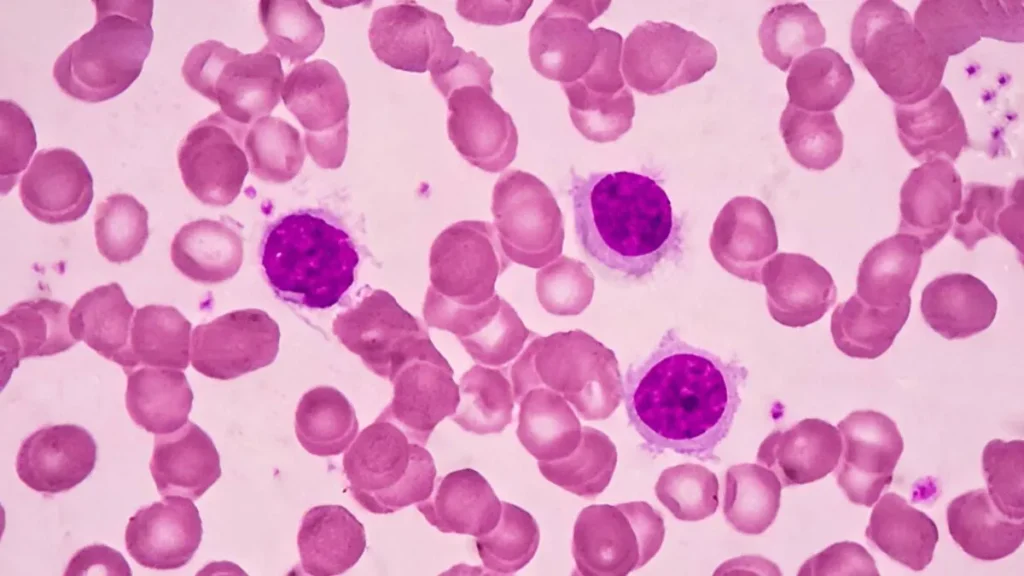
When people talk about cancer in India, the focus is mostly on the more common types: breast cancer, lung cancer, and cervical cancer. These are the ones that come up in awareness drives and are mentioned in public health discussions. But there’s another side to the picture. Rare cancers, such as sarcomas and certain blood-related malignancies; leukaemias, lymphomas, and multiple myelomas, often go undetected. And unfortunately, many of these are only picked up when the disease has already progressed. Read More
How Risk-Reducing Surgeries Help Young BRCA Carriers with Breast Cancer Live Longer by Dr. Saadvik Raghuram Y

Understanding the Risk If you’re a young woman diagnosed with breast cancer and carry a BRCA1 or BRCA2 mutation, you’re at a higher risk not just for a second breast cancer—but also ovarian cancer. But here’s the good news: science now confirms that certain preventive surgeries can significantly improve survival. A large international study (published in The Lancet Oncology, 2025) tracked over 5,000 women under age 40 with BRCA mutations and breast cancer—and the results were clear. What Are Risk-Reducing Surgeries? 1. Risk-Reducing Mastectomy (RRM):Removal of the healthy breast to prevent second breast cancers.2. Risk-Reducing Salpingo-Oophorectomy (RRSO):Removal of the ovaries and fallopian tubes to prevent ovarian cancer. What This Means for You If you’re a BRCA1/2 mutation carrier and have been diagnosed with breast cancer at a young age:• Risk-reducing mastectomy helps prevent new breast cancers and extends survival.• Ovarian removal (RRSO) significantly improves overall survival—especially for BRCA1 carriers and those with HER2-positive breast cancer. Final Thoughts This study reinforces the power of preventive surgery when tailored to your unique risk profile. These aren’t just life-saving—they’re life-extending. Consult Dr. Saadvik Raghuram to understand your BRCA risk and treatment options
